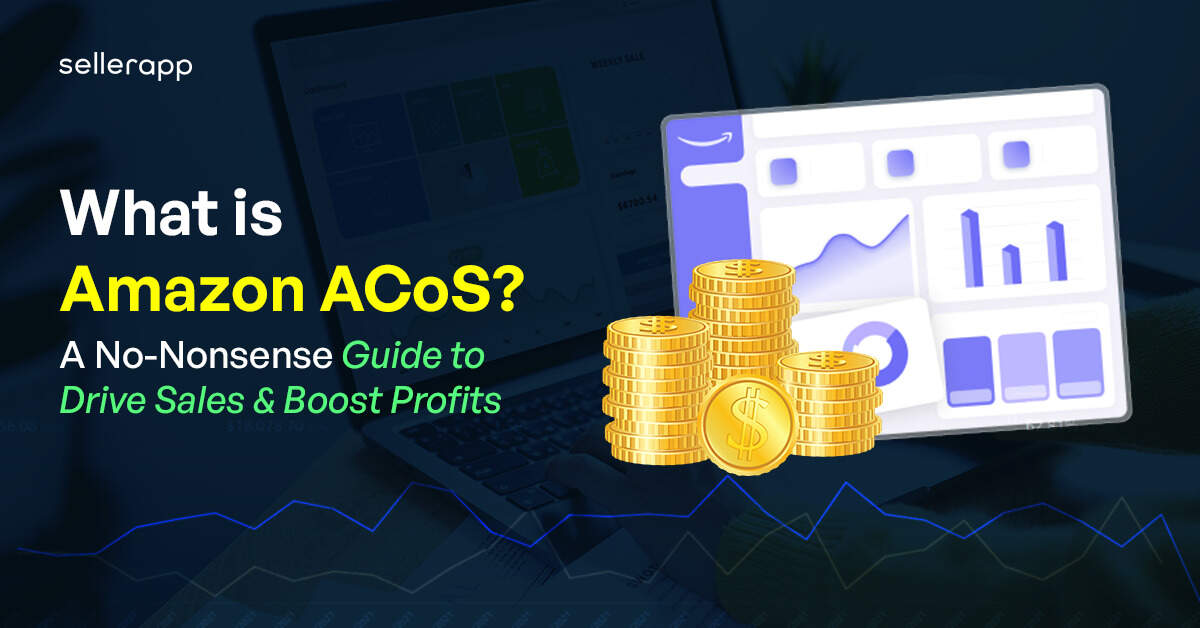Advertising on Amazon can be a powerful tool for driving sales and increasing product visibility. However, it’s crucial to understand how your advertising spend translates into actual profit. That’s where ACoS, or Advertising Cost of Sales, comes in. It’s a vital metric for every Amazon seller, offering a clear picture of your advertising campaign’s efficiency. Ignoring ACoS can lead to wasted ad spend and decreased profitability. This guide will delve into the intricacies of calculating ACoS and provide actionable strategies for optimizing your campaigns for maximum ROI.
Understanding Amazon ACoS and Its Importance
ACoS represents the percentage of your ad spend relative to the revenue generated by those ads. In simpler terms, it tells you how much you’re spending on advertising for every dollar you earn in sales attributed to those ads. A lower ACoS is generally desirable, indicating a more efficient and profitable advertising campaign.
Why is ACoS important?
- Performance Measurement: Accurately gauges the effectiveness of your advertising campaigns.
- Profitability Analysis: Helps determine if your ad spend is generating a positive return.
- Optimization Insights: Provides data for identifying areas to improve campaign performance and reduce costs.
- Budget Allocation: Informs decisions about where to allocate your advertising budget for maximum impact.
The ACoS Formula: A Simple Calculation
The formula for calculating ACoS is straightforward:
ACoS = (Total Ad Spend / Total Ad Revenue) x 100
For example, if you spent $100 on ads and generated $500 in sales attributed to those ads, your ACoS would be (100 / 500) x 100 = 20%.
Step-by-Step Guide to Calculating Your Amazon ACoS
- Gather Your Data: Collect your total ad spend and total ad revenue for a specific period (e.g., daily, weekly, monthly). This data can be found in your Amazon Seller Central advertising reports.
- Divide Ad Spend by Ad Revenue: Divide your total ad spend by your total ad revenue.
- Multiply by 100: Multiply the result by 100 to express ACoS as a percentage.
- Analyze and Interpret: Analyze your ACoS in relation to your profit margin and business goals.
Factors Influencing Your ACoS: What to Consider
Several factors can impact your ACoS. Understanding these factors is key to optimizing your advertising campaigns:
- Keyword Relevance: Using relevant keywords ensures your ads are shown to the right customers.
- Product Listing Optimization: A well-optimized product listing with high-quality images and compelling descriptions can increase conversion rates.
- Bidding Strategy: Choosing the right bidding strategy (e.g., automatic, manual) can significantly affect your ACoS.
- Competition: The level of competition in your niche can influence your ad costs and ACoS.
- Pricing: Your product’s pricing can impact its conversion rate and, consequently, your ACoS.
Target ACoS: Finding Your Sweet Spot
There’s no one-size-fits-all “good” ACoS. The ideal target depends on your profit margin and business objectives. Generally, you want your ACoS to be lower than your profit margin. For example, if your profit margin is 30%, you’d ideally want your ACoS to be below 30% to ensure profitability;
Consider these scenarios:
| Scenario | Description | Target ACoS |
|---|---|---|
| Launching a New Product | You might accept a higher ACoS initially to gain visibility and build brand awareness. | Potentially higher than profit margin (short-term). |
| Mature Product with High Organic Ranking | Aim for a lower ACoS to maximize profitability. | Below profit margin. |
| Competitive Niche | May require a slightly higher ACoS to maintain market share. | Close to profit margin, constantly optimizing. |
Strategies to Improve Your Amazon ACoS
Improving your ACoS is an ongoing process that requires continuous monitoring and optimization. Here are some strategies to consider:
- Keyword Optimization: Refine your keyword targeting to focus on high-converting keywords. Use negative keywords to exclude irrelevant search terms.
- Bid Management: Adjust your bids based on performance data. Increase bids for profitable keywords and decrease bids for underperforming ones. Consider using automated bidding strategies.
- Product Listing Optimization: Improve your product title, description, and images to increase click-through rates and conversion rates.
- A/B Testing: Experiment with different ad creatives and landing pages to identify what resonates best with your target audience.
- Campaign Structuring: Organize your campaigns into tightly themed ad groups for better targeting and control.
FAQ: Frequently Asked Questions About Amazon ACoS
What is a good ACoS on Amazon?
A good ACoS is subjective and depends on your profit margin and business goals. Generally, an ACoS below your profit margin is desirable.
How do I lower my ACoS on Amazon?
You can lower your ACoS by optimizing your keywords, improving your product listings, adjusting your bids, and refining your targeting.
What happens if my ACoS is too high?
If your ACoS is too high, it means you’re spending too much on advertising relative to the revenue you’re generating; This can negatively impact your profitability.
Where can I find my ACoS in Amazon Seller Central?
You can find your ACoS in your Amazon Seller Central advertising reports. Navigate to the “Reports” tab and select “Advertising Reports.”
Calculating and understanding your Amazon ACoS is paramount for success on the platform. It provides a clear indication of your advertising effectiveness and profitability. By diligently monitoring your ACoS and implementing the strategies outlined above, you can optimize your campaigns, reduce wasted ad spend, and ultimately drive more revenue. Remember that optimizing ACoS isn’t a one-time task. Continuous analysis, testing, and adjustments are crucial to staying ahead of the competition and achieving your business goals. Embrace data-driven decision-making and view ACoS as a vital compass guiding your advertising strategy. Consistent effort in ACoS management will lead to improved ROI and sustainable growth on Amazon.

